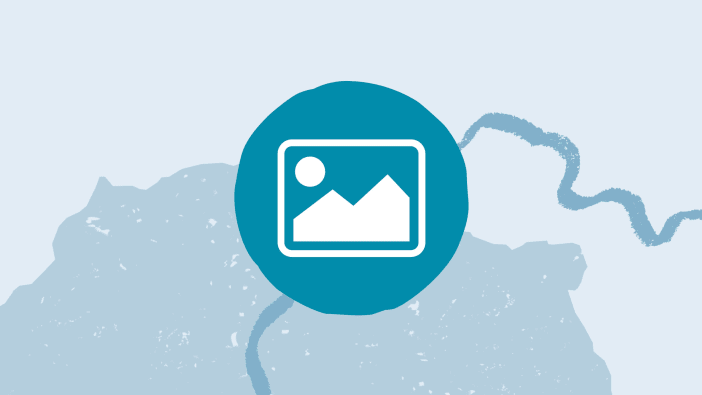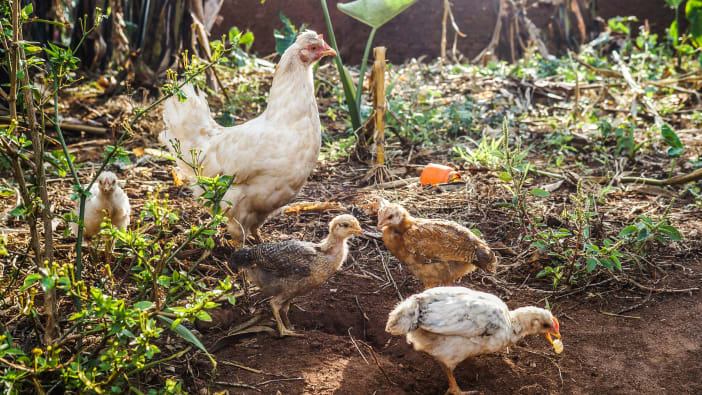by Ines Vivian Domingo.
The use of plants to cure ailments is an age-old practice. The preparation of herbal medicines remains an important part of healthcare for both humans and livestock, especially in rural areas. Small and subsistence farmers in remote communities depend largely on the use of medicinal plants in the absence of veterinarians and modern veterinary medicines. And even if these were available, farmers could ill-afford to pay for the services or buy the medicines anyway. Medicinal plants, hand in hand with proper nutrition and disease prevention, can help provide inexpensive animal healthcare.
On the centre pages are listed plants commonly found in the tropics which have already been well researched, field tested, widely used and found to be effective by farmers. The plant parts used and their known uses, together with the method of preparation and administration are listed. (Most of the plants mentioned here may also be used for humans. However, one should first consult local herbalists for advice.)
The dosages indicated are for adult cattle and carabaos (buffaloes). Their young and smaller livestock like goats, sheep and pigs are given half this recommended dose. As with commercial veterinary medicines, dosages are partly determined by the animal’s body weight, so the amount to be given to small adult cattle would be less than the dose for large adult ones. Some of the dosages given are in ranges, such as 1/2–1 cup, because of the variations in the animals’ size or weight. You should adjust the amount to be used accordingly.
Use only one plant medicine at a time. This way it will be easier to pinpoint the cause of the improvement in the animal’s condition than if a mixture of many plants is used.
Planting, collecting, harvesting and processing
Although most medicinal plants grow naturally in the wild, farm families are best served if they grow them in their own backyards. If an animal gets ill, the plant is easily available without needing to walk long distances in search of the plant needed.
The appropriate time and method of harvesting medicinal plants is very important. Plants contain active ingredients (the compounds responsible for the plant’s medicinal value) which are affected by things such as temperature, humidity and light, and the manner of handling during harvest.
In general, it is best to harvest in the morning on a warm, sunny day. Different plant parts require different methods of collection:
- Leaves and flowers should be handpicked.
- If the seed is to be used, the fruit must be fully ripe.
- If the whole fruit is to be used, it must be harvested before reaching maturity.
- Underground parts are best when collected before the plant starts flowering.
Collect only the recommended parts, since the relative distribution of the active ingredient varies within the plant body. Sometimes the roots or the seeds may contain more of the active ingredient or vice versa. Collect only from plants that are healthy, with no signs of injury, disease or any abnormality.
Proper drying is necessary if the recommended medicine needs to be dry or has to be stored for future use. The plant material can either be sun-dried or air-dried. Properly dried leaves crumble easily. Small amounts may be dried in a large transparent container such as an uncapped large jar by a sunny window. Large amounts may be hung in bundles, baskets or mesh bags in open shade or spread on a clean mat in a warm dry place indoors. Do not dry on concrete pavements or rooftops as extreme heat will destroy some of the active ingredients.
Keep the dried plant medicines inside airtight containers. Moisture encourages the growth of moulds and other microorganisms (also insect infestation), resulting in the destruction of the active ingredient and the deterioration of the plant medicine. Store the container in a cool, dry place away from direct light. Finally, label the container, indicating the name of the plant and the date of collection.
References:
Paraveterinary Medicine: An Information Kit on Low-cost Health Care Practices IIRR - YC James Yen Center, Philippines 1996
Medicinal Uses of Upland Vegetation (information sheet from Agroforestry Technology Information Kit) IIRR (International Institute of Rural Reconstruction), Philippines 1994
Ines Vivian Domingo is the Coordinator of the SEA Media Support Program, Studio Driya Media, Jl Makmur 16, Bandung 40161, West Java, INDONESIA. She specialises in developing educational materials to support community development efforts. With 15 years’ experience, she provides training in communication and media production and also carries out consultancy work.








